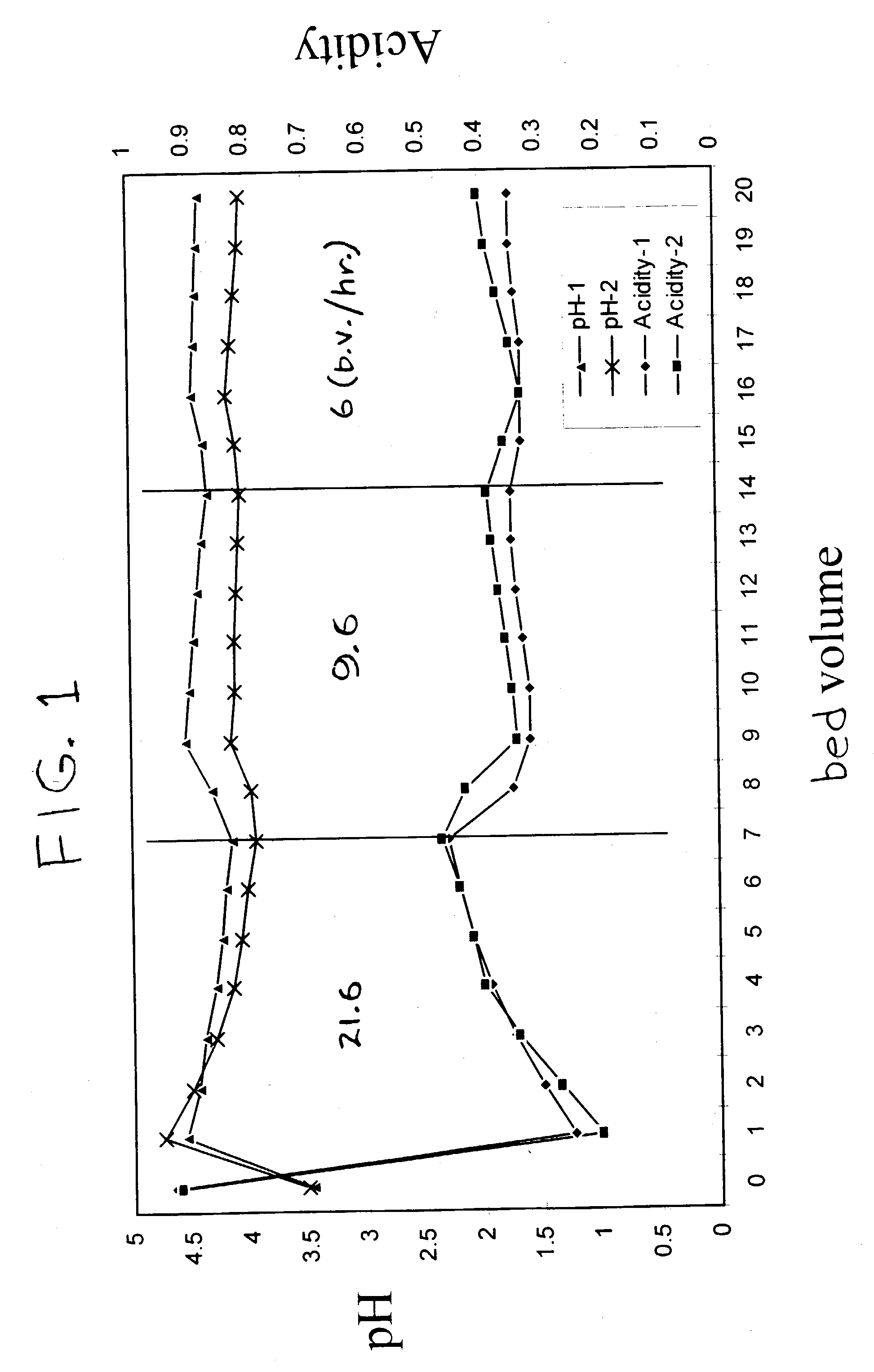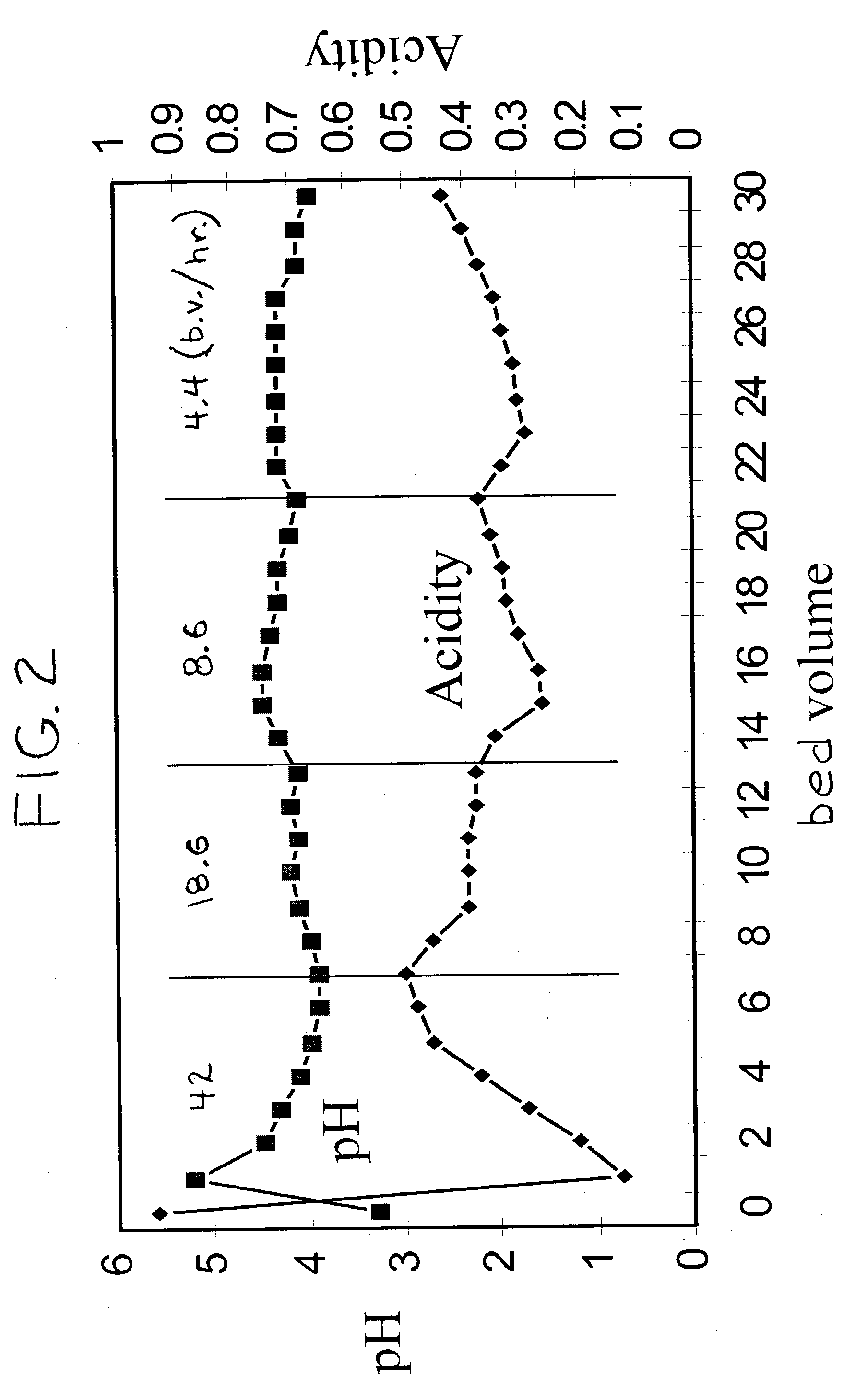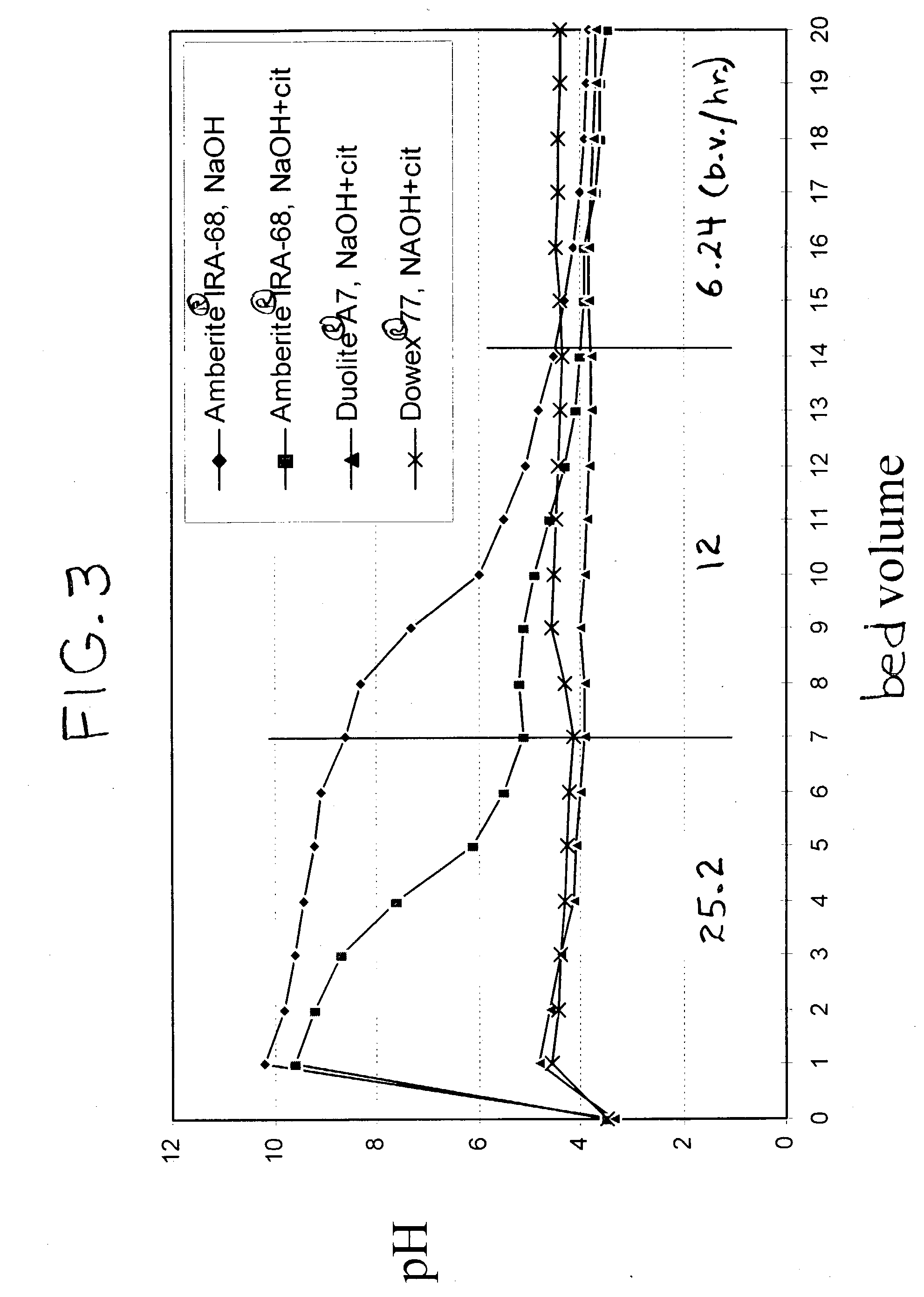Resin deacidification of citrus juice with high acid maintenance
a technology of citrus juice and deacidification enzyme, which is applied in the direction of ion exchangers, water/sewage treatment by ion exchange, separation processes, etc., can solve the problems of most unpleasant reactions to food, nausea, skin rash, and hives, and achieves less contact time, reduce acidity of juice, and flow rate faster
- Summary
- Abstract
- Description
- Claims
- Application Information
AI Technical Summary
Benefits of technology
Problems solved by technology
Method used
Image
Examples
example 2
[0051] A resin bed of Dowex.RTM. 77 was regenerated with 2% sodium hydroxide during a bed turn over of 3 bed volumes of 500 ml each. Orange juice (after centrifiguration to reduce suspended solids content) was passed through the regenerated column with a varying juice flow rate characterized as fast, moderate and slow. Results are shown in FIG. 2. The rate started at 42 bed volumes per hour, stepping down to 4.4 bed volumes per hour. The composite of bed volumes 1 through 10 was 0.38 percent acid, the composite of bed volumes 1 through 20 was 0.35 percent acid, and the composite of bed volumes 1 through 30 was 0.35 percent acid. After the first bed volume, the pH range was 4.7 to 4.1, showing good pH control, and the capacity was good, 68 percent acid removal at 20 bed volume composite juice sample.
example 3
[0052] Three different resin beds were regenerated with 2% sodium hydroxide during a bed turn over of 3 bed volumes of 500 ml each. The resins were Amberlite.RTM. IRA-68, Duolite.RTM. A7 and Dowex.RTM. 77. Some of the regenerated Amberlite.RTM. IRA-68 was used directly to deacidify pre-centrifuged orange juice. Otherwise, the three regenerated resins were subjected to fast flow passage of 1% citric acid therethrough for four bed volumes. Orange juice, which had been centrifuged to reduce suspended solids, was passed through all four resin volumes at varying juice flow rates. Through bed volume 7 the flow rate was 25.2 bed volumes per hour. For bed volumes 8 through 14, the flow rate was 12 bed volumes per hour, and for bed volumes 15 through 20, the flow rate was 6.2 bed volumes per hour.
[0053] Plots of pH versus bed volume number are given in FIG. 3. The Duolite.RTM. and Dowex.RTM. resins gave good pH control, with the Duolite.RTM. resin showing a range of 4.8 pH to 3.6 pH, and the...
PUM
| Property | Measurement | Unit |
|---|---|---|
| pH | aaaaa | aaaaa |
| pH | aaaaa | aaaaa |
| pH | aaaaa | aaaaa |
Abstract
Description
Claims
Application Information
 Login to View More
Login to View More - R&D
- Intellectual Property
- Life Sciences
- Materials
- Tech Scout
- Unparalleled Data Quality
- Higher Quality Content
- 60% Fewer Hallucinations
Browse by: Latest US Patents, China's latest patents, Technical Efficacy Thesaurus, Application Domain, Technology Topic, Popular Technical Reports.
© 2025 PatSnap. All rights reserved.Legal|Privacy policy|Modern Slavery Act Transparency Statement|Sitemap|About US| Contact US: help@patsnap.com



